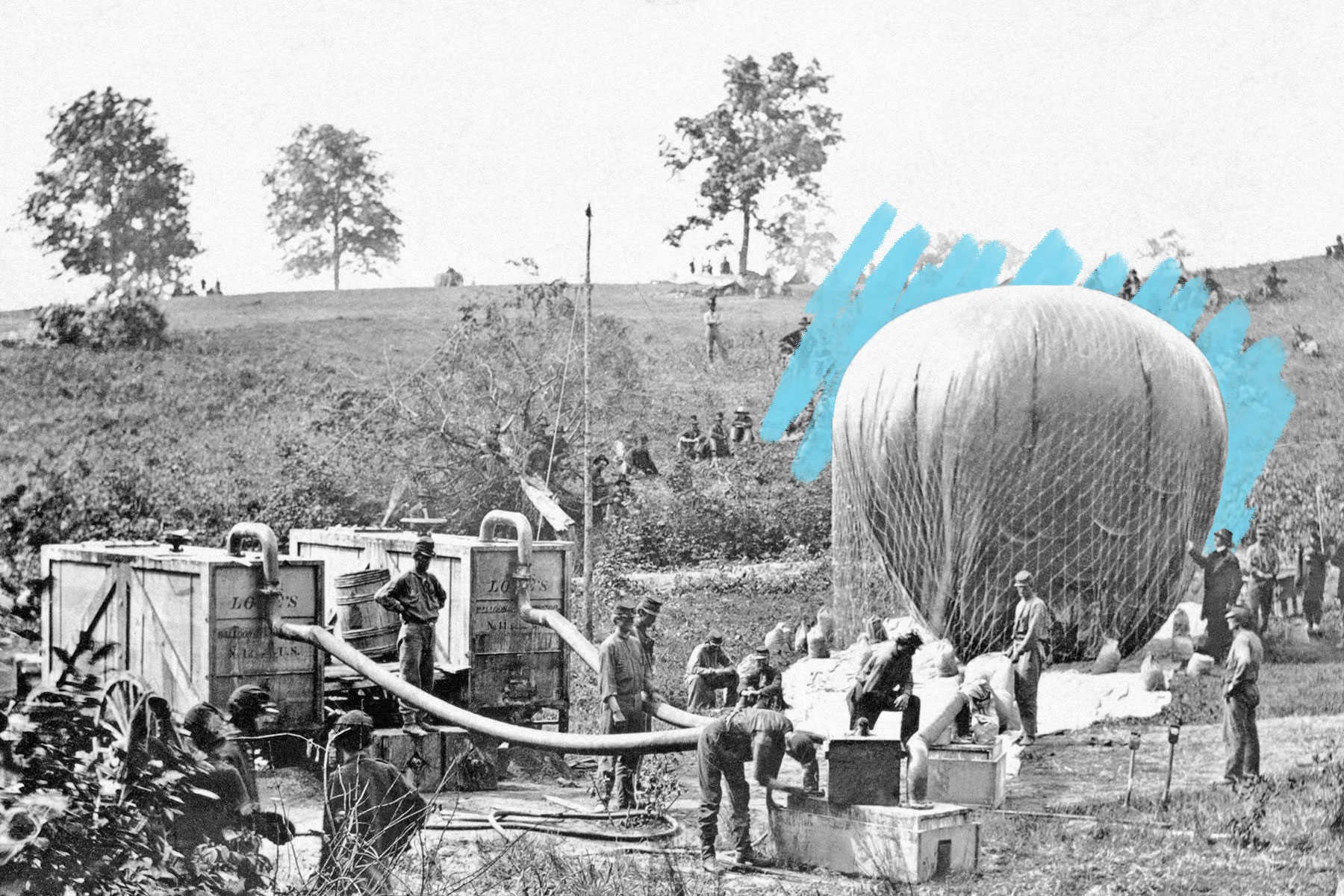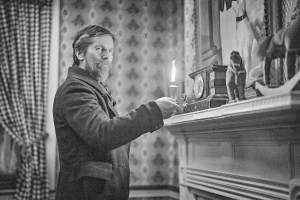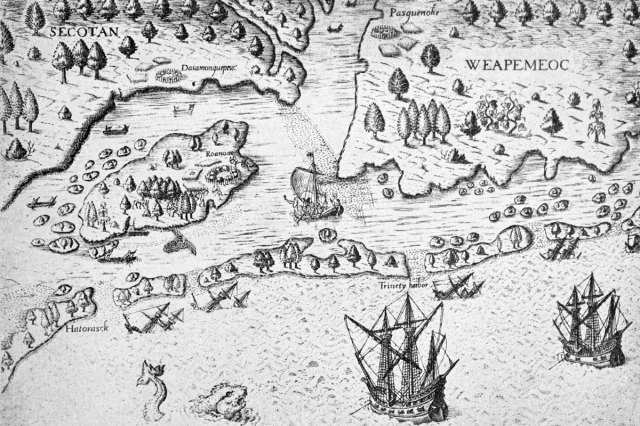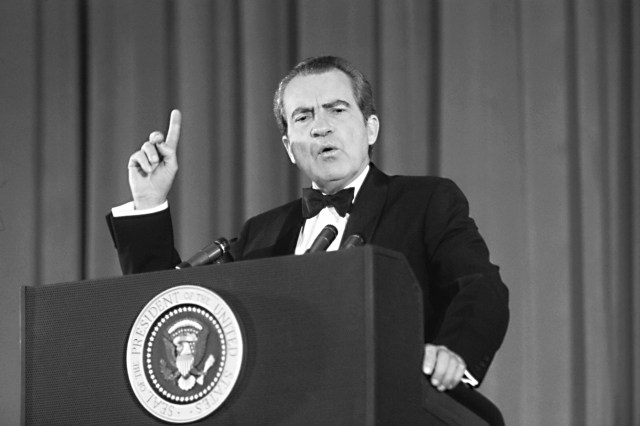Abraham Lincoln approved a balloon corps during the Civil War.
In 1861, shortly after the start of the Civil War, President Abraham Lincoln authorized the creation of an aerial surveillance organization known as the Union Army Balloon Corps. Before the war, balloonists were usually carnival performers, but that all changed thanks to aeronaut Thaddeus S.C. Lowe. On July 11, 1861, Lowe was invited to demonstrate his ballooning skills for the President, who hoped to use hot-air balloons for aerial reconnaissance missions in the war.
During his demonstration, Lowe ascended 500 feet into the air and relayed a telegraph about what he saw to Lincoln’s staff. After the successful showcase, Lincoln offered Lowe the role of chief aeronaut in the Balloon Corps, which formally began operations that October. The purpose was to gather intel about the Confederate Army’s location and relay it to Union troops on the ground, who could then fire on the army from a great distance without even seeing the enemy. The fleet grew to include seven balloons, some of which were tethered to barges in the Potomac River that effectively served as early precursors to the modern aircraft carrier. Though the surveillance proved strategically beneficial, many Union officers, including General George B. McClellan, were concerned about the safety of the balloons. Lowe ultimately resigned his post on May 7, 1863, and the Balloon Corps were dissolved shortly thereafter.















